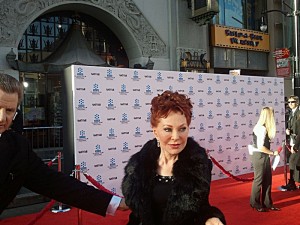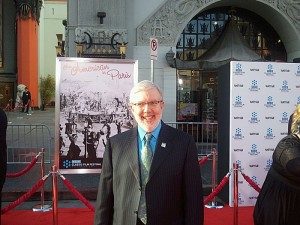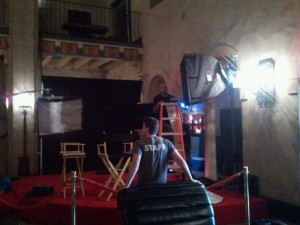 From Thursday night’s world premiere of the newly restored “Cabaret” to the closing-night screening of “Annie Hall” on Sunday, the TCM Classic Film Festival in Hollywood was packed with stars, fans, media and movie experts. “Cabaret,” which celebrates its 40th anniversary this year, opened the fest. The red-carpet event at Grauman’s Chinese Theatre drew stars Liza Minnelli, Joel Grey and Michael York.
From Thursday night’s world premiere of the newly restored “Cabaret” to the closing-night screening of “Annie Hall” on Sunday, the TCM Classic Film Festival in Hollywood was packed with stars, fans, media and movie experts. “Cabaret,” which celebrates its 40th anniversary this year, opened the fest. The red-carpet event at Grauman’s Chinese Theatre drew stars Liza Minnelli, Joel Grey and Michael York.
Other luminaries included: Kim Novak, Bob Mackie, Debbie Reynolds, Norman Jewison, Rhonda Fleming, Peggy Cummins, Marsha Hunt, Rose McGowan, Richard Anderson, Thelma Schoonmaker, Robert Evans, Robert Towne, Robert Wagner, Kirk Douglas, Stanley Donen, Tippi Hedren, Angie Dickinson, Tina Sinatra, Tony Roberts and Walter Mirisch.
And fittingly, since the fest’s theme was style, there were film noir screenings as well as events devoted to both noir and fashion. The Film Noir Foundation’s Eddie Muller programmed the classic noir offerings, Shannon Clute and Richard Edwards of noircast.net led a panel discussion and author Foster Hirsch was on hand to interview Walter Mirisch, whose first foray into producing was 1947’s “Fall Guy” by director Reginald Le Borg.
I’m still recovering from so much delightful viewing, but here are a few photo highlights, courtesy of the fest.
All images courtesy of TCM Classic Film Festival/photographers Jason Merritt, Edward M. Pio Roda, Mark Hill and Adam Rose.























































From FNB readers